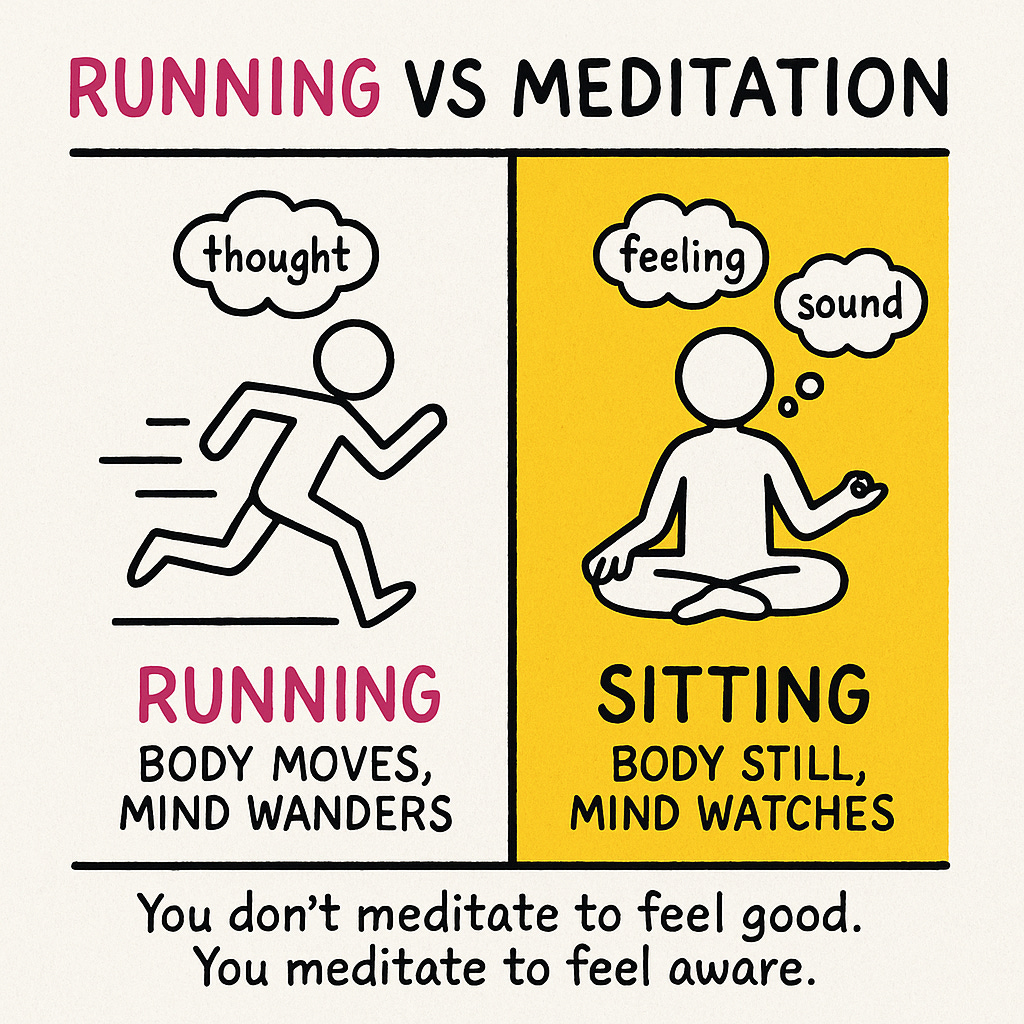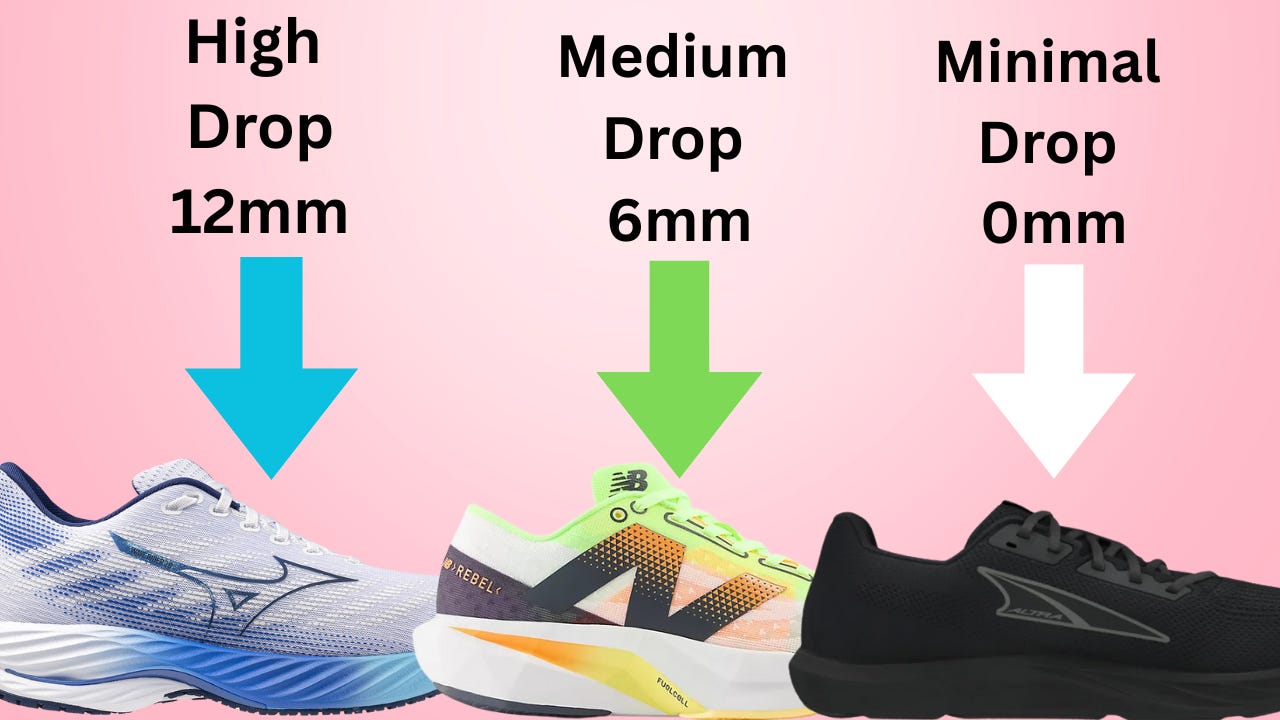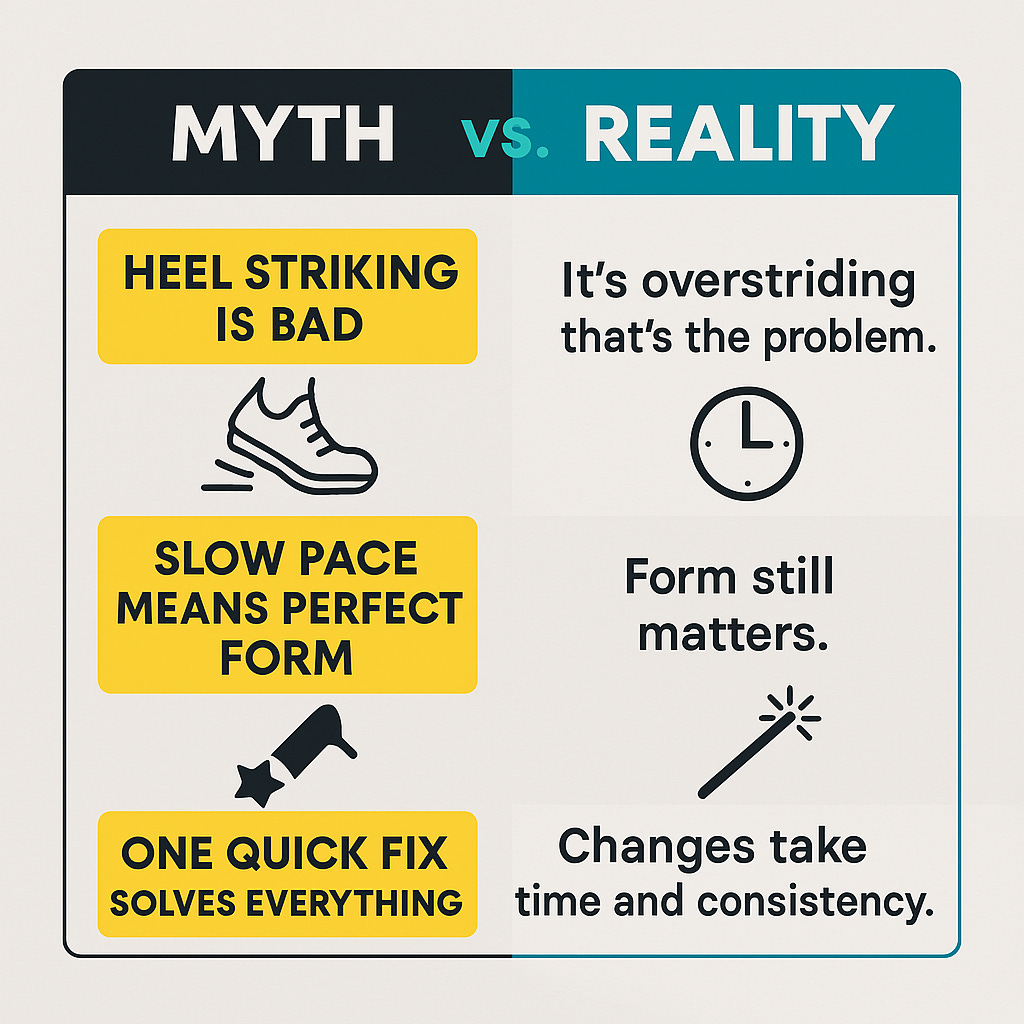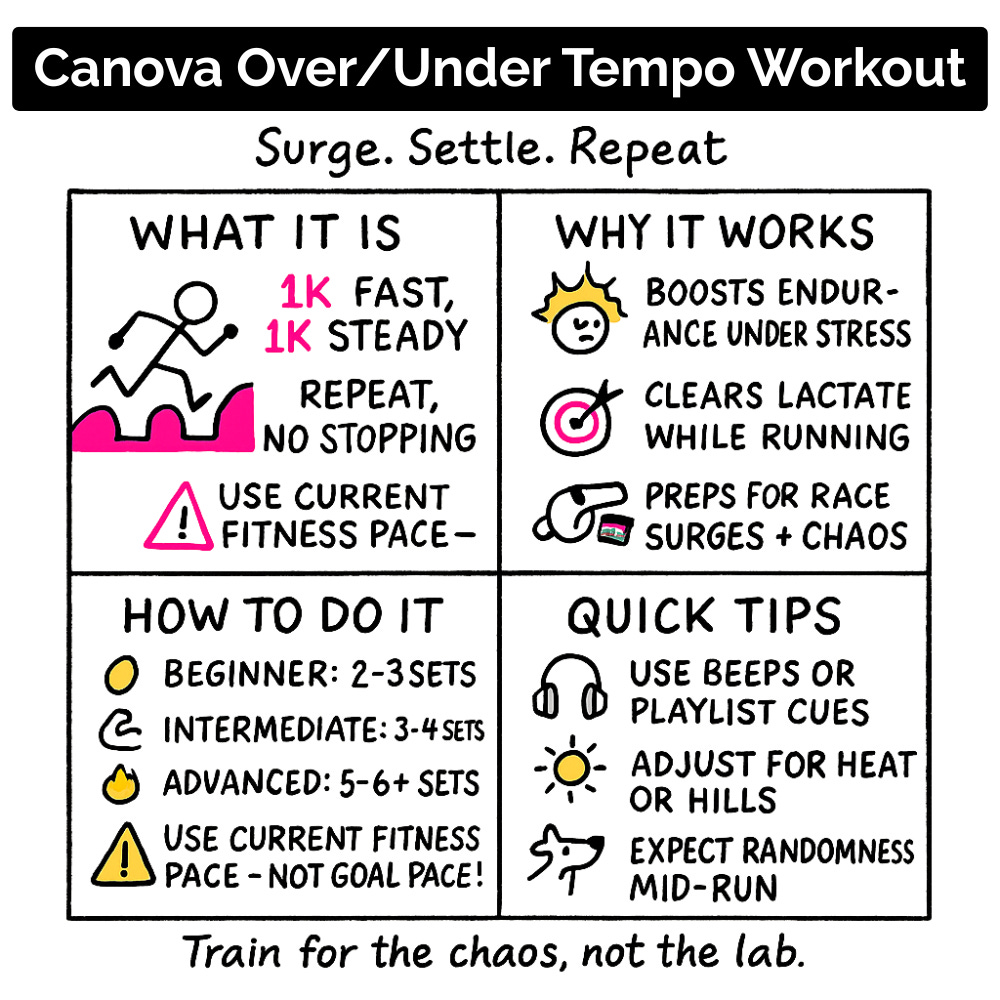What’s The Best Running Footstrike? Heel vs. Midfoot vs Forefoot Strike
Passive v Active Meditation + Workout Of The Week
The Fast Track
🧘🏽Passive Meditation is Running — Active is Sitting Still
👟What’s The Proper Running Footstrike? Heel vs. Midfoot vs Forefoot Strike
📆 Workout Of The Week | Canova Alternating K’s
🧘🏽 Passive Meditation is Running — Active Meditation is Sitting Still
Before I started my daily meditation practice in 2013, I used to be the person who would say, “I run and cycle — I don’t need to meditate”.
Damn, the 20 years ago Daren was very VERY wrong.
Here are the key differences between running (or insert your activity of choice) and meditation, and why they are both extremely valuable for you and your mental health.
Running is passive meditation: Passive meaning you aren’t actively focused on doing the thing.
Sitting still is active meditation: Active meaning you are actually doing the thing.
(There is a middle ground which I touch on at the end)
There's something about running that just feels meditative. Maybe it's the rhythmic nature of the movement, or the fact that you're often alone with your thoughts. Whatever the reason, running can be a great way to get into a meditative state.
Sitting meditation is often seen as the opposite of running – it's slow, passive, and requires you to be still. But in many ways, sitting meditation is actually more active for your brain than running. You're not just letting your thoughts flow freely; you're actively observing them and training your mind to focus back when it wanders.
So, which is better for meditation: running or sitting? I say both, as neither one is necessarily better than the other. It all depends on what your objective is, how you operate, and what works best for you.
I personally need both. If all else fails, I resort to a form of active meditation, also known as mindfulness, which involves simply observing everything that is happening both externally and internally. Thoughts, feelings, sensations, my environment, and so on.
If you find that running helps you clear your head and get into a meditative state, then go for it. But if sitting still is more your style, that's perfectly fine too. In the end, the goal is to find a practice that works for you and helps you recenter yourself with awareness.
BTW - The goal of meditation is not to feel good. This is modern-day culture putting an optimistic slant on meditation. Feeling good is a byproduct and happens sometimes if things line up. You can’t force that, like you can’t force someone to love you; all you can do is be curious about them, care, and be your best self.
P.S. - Here's a cool hack for a middle ground between meditation. Go for a very slow run or even a brisk walk, but do it mindfully. This means being as aware as possible of everything around you, without judgment.
Example - If I see an ugly building, I note everything about it but won’t express my opinion or feelings about it. I’ll just note that it has certain features that evoke a certain sense in me. Then I force myself to find something that I like about it or at least, that I think is interesting.
I do this with people, too. It’s a great exercise to be aware and not resort to immediate judgment. Just note it and move on.
👟What’s The Proper Running Footstrike? Heel vs. Midfoot vs Forefoot Strike
Your foot hits the ground 80,000 times during a marathon. And a lot of crazy things happen when each of those foot strikes is slightly off. Think of it as a tiny paper cut—harmless once, but do it 80,000 times? Now you get it.
By the end of this episode, you’ll understand the pretty dope science of how these micro-impacts add up, and more importantly, how to make each one of those 80,000 steps work for you, not against you.
What You’ll Learn
How to find your ideal foot strike for better running form
Why there’s no “perfect” running form – and why even elite runners land differently.
Heel striking: The misunderstood villain—what it helps, what it hurts, and when to fix it.
Forefoot striking: Why it works for sprinters but can wreck distance runners.
Midfoot striking: The sweet spot for efficiency—and how to transition safely.
The real enemy—overstriding – and how it silently sabotages your stride.
Shoe choices to help with foot strike.
Cadence: A simple shift that instantly changes how your foot lands.
And if you want to fine-tune all of this without overthinking, grab my free foot strike and cadence guide in the description—it’ll save you from a ton of trial and error.
Full episodes’s up: watch it, read it, or take it on your next run here.
📆 Workout Of The Week: Renato Canova Alternating K’s aka Over/Unders
Supra and Sub Threshold Run Training
Elite marathoners don't just cruise at one pace like your treadmill or easy waterway flat run. They surge, they slow and they play tactical pacing mind games.
Same goes for you — weather gets hot, hills pop up out of nowhere, or a dog runs in front of you at the water station. Better train for those pace changes now than suffer later because you weren’t ready!
What Is It? A continuous medium to long distance run where you hit 10k tempo pace for a kilometer, then dial back to marathon pace for a kilometer. Repeat each set (fast/slow) between 3-6+ times depending on fitness goals.
How To Do It? Run at your current 10km race pace fitness (not goal!) for 1 kilometre (for metrically sensitive folks that’s about .61 miles or for most people between 4-7 minutes) then drop back to your marathon pace for the exact distance (1km/.61 miles). Every fast/slow pair is one “set”.
Beginner runners or unfit folks do 2-3 sets.
Intermediate do 3-4 sets.
Advanced do 5+ depending on your upcoming race, etc.
Example For Me:
My current 10k pace is 3:50-3:55 min/km (6:10 - 6:17 min/mile) - This is “fast”.
My current marathon pace is 4:15-4:20 min/km (6:52 - 6:58 min/mile) - This is “slow”.
Keep doing that for as long as I need.
Why it works: It's sneaky metabolic genius. While you're "recovering" at marathon pace, your body is still working to clear lactate from the harder effort. Unlike traditional intervals where you stop and wheeze, this teaches your system to process waste products (the extra lactate and hydrogen ions) on the fly, which is precisely what you need in races when things get spicy.
This is based on legendary running coach, Renato Canova and is bread and butter for elite Kenyans making those last few miles of a race suck approximately 37% less.




